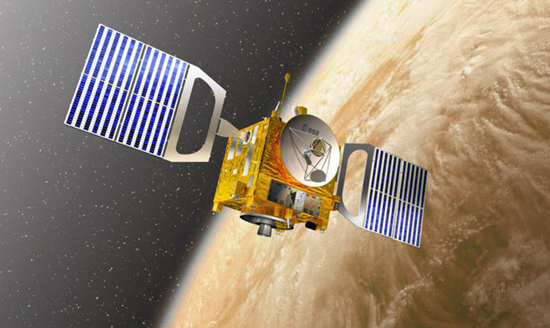
Last month, the European Space Agency (ESA) landed a robot on a comet. While the exciting news seemed to come out of nowhere, you can be forgiven for sleeping through the initial launch - it happened in 2004. Scientists and engineers at space agencies around the world play very long games. Rosetta travelled 6.4 billion kilometres before rendezvousing with Comet 67P/Churyumov-Gerasimenko. Even on the starship Enterprise, that’s well over an hour away at warp speed. This raises the question: what else is going on up there? Here are 15 on-going space missions you might not know about.
1. Akatsuki
Japan Aerospace Exploration Agency (JAXA) launched Akatsuki (“Dawn”), a meteorological satellite, in 2010. It arrived at its destination, Venus, later that year. Space exploration is hard, though, and due to an engine problem, the probe failed to enter Venus’s orbit.
Here’s what happened: On average, it takes about eight minutes for a radio signal to reach Venus from Earth. (Sometimes it’s shorter; sometimes it’s longer. It just depends on where the planets are.) Anything sent such vast distances, then, has to be somewhat self-sufficient. Not only did JAXA have to deal with that delay, but once Akasuki reached the Cloud Planet and began its manoeuvre into orbit, the probe had to enter a total communications blackout - it was, for a time, on the other side of the planet with no way for signals to reach Earth. Once communications were re-established, JAXA learned that orbital manoeuvres failed, the probe shot past Venus, and the system went into a kind of holding pattern. (Even in their setbacks, space probes are designed to be resilient and cunning.)
The bad news was that physics were no longer on the probe’s side and another try at Venus was impossible; entering orbit is typically a one-shot deal. The good news? Engineers are geniuses. They discovered that while its main engine was shot, its little thrusters were OK - so they put Akatsuki into hibernation mode and a heliocentric orbit (i.e. around the Sun), and the waiting game began. Rather than try to chase down Venus, they decided, why not just let Venus and Akatsuki chase down each other? The two will again line up in late 2015, at which point another attempt at establishing orbit will be made. It’s risky - this is the first time the thrusters have ever been used in such a way. But if it works, humanity’s understanding of the weather and volcanism of our “sister planet” will increase greatly.
2. Juno
NASA launched Juno in 2011 as part of its New Frontiers program. Its mission: to fly to Jupiter and figure out how the planet was formed, what it’s made of, and how its formation affected that of the Solar System. (Actually, any information about Jupiter would be nice. The whole planet is a great big mystery.)
The real story begins 4.6 billion years ago, when a giant nebula suffered a gravitational collapse. The resulting bedlam coalesced to form the Solar System. Jupiter is key to understanding how this happened because it was likely the first planet to form. It is thus made of the same material as that nebula. In other words, Juno is on a scientific odyssey to the origin of the Solar System. If we can figure out Jupiter, we might be able to figure out where we came from. The probe should arrive at Jupiter on July 4, 2016.
3. Dawn
NASA, ever faced with budgetary woes from a state devoid of imagination or ambition, was forced to more or less cancel the Dawn mission in 2003, 2005, and 2006. Undaunted, today the orbiter is four months away from Ceres (the largest object in the asteroid belt), having already spent 14 months orbiting Vesta (the second-largest). Dawn was launched into space in 2007 and has since been stacking up “firsts” in space exploration. According to NASA, it’s the first “purely scientific” probe powered by ion thrusters. It’s the first probe to visit Vesta, and thus the first probe to visit a protoplanet. It’s set to be the first to visit Ceres, and if it achieves orbit with that dwarf planet (another first!), will be the first probe to orbit two bodies in a single mission. And it’s the first prolonged mission in the asteroid belt.
Why does the mission matter? During the formation of the Solar System, celestial dust merged into clusters, which merged into rocks, which merged into planets. Vesta and Ceres should have been right there alongside Earth, Venus, Mars, etc., in our sixth-grade light bulb diorama, but they couldn’t quite make the jump to planet-hood. The reason: Jupiter, and its incredible large gravity well. That’s great news for us. These proto-planets - one rocky and the other icy - are more or less windows into the past, and by studying them, we can fill in the blanks on the history and makeup of the Solar System. Dawn will arrive at Ceres in April.
4. New Horizons
Nine years ago, NASA launched space probe New Horizons as part of its New Frontiers program. (New Frontiers, according to NASA, “sends cost effective, mid-sized spacecraft on missions that enhance our understanding of the solar system.” See: Juno, above.) First, a little stellar cartography: if we were to draw a simplified version of the Solar System as a series of concentric rings, it would start with the Sun at the centre. Next would be Mercury, Venus, Earth, and Mars, which make up the “inner” or “terrestrial” planets. Moving outward: separating Mars and Jupiter is the asteroid belt (home to proto-planets Pallas, Ceres, and Vesta). Beyond the asteroid belt are Jupiter, Saturn, Uranus, and Neptune, which are collectively known as the “outer planets” (or “gas giants”). The outer planets are really, really big. (Ganymede, for example, one of Jupiter’s moons, is only a bit smaller than Mars. Europa, another of Jupiter’s moons, harbours the best chance of extraterrestrial life in the Solar System. These are really exciting places.) Beyond the outer planets is yet another belt - the Kuiper Belt (of which Pluto is a part) - that consists of bodies called “volatiles,” which are frozen gasses. Beyond the Kuiper Belt is Eris, which was initially called the tenth planet, but is now characterized as a dwarf planet (to the relief of astrologers everywhere). Then we have the Oort Cloud, which is kind of a shell of comets that surrounds the Solar System.
New Horizons launched in 2006 for a date with Pluto, the only planet (well, it was still a planet when we launched it) that we haven’t explored. In 2007, the spacecraft used Jupiter’s gravity to sling it into space with a bit more speed (a “bit more” defined here as an increase of 9000 miles per hour). Because NASA never wastes an opportunity, during this time New Horizons captured four months’ worth of Jupiter imagery and atmospheric data. The probe also crossed paths with asteroid 132524 APL, returning images and composition data.
Next year, the probe will reach Pluto and its moon, Charon. The expected scientific returns are enormous. As Alan Stern of the New Horizons project said in a news conference, “Everything that we know about the Pluto system today could probably fit on one piece of paper.” That’s about to change in a big way. So far, things are looking good. On December 6, 2014, mission control sent orders to the probe to “wake up,” which it promptly did. New Horizons should return some thrilling data - beginning next year, the quality of images it captures will begin to exceed those of the Hubble Space Telescope. Its primary mission will be to determine the geology, chemical composition, and atmospheres of Pluto and Charon. In 2016, it’s on to the Kuiper Belt for further exploration. How long-term is the New Horizons mission? If things go well, the probe might still have power into the 2030s, returning data on Kuiper Belt objects as well as the outer heliosphere.
5. Rosetta
Historians will one day hail 2014 as a pivotal year in space exploration - the year the European Space Agency landed a robot on a comet. It wasn’t easy - the mission required four gravity assists to reach the comet, including one that took it a perilous 150 miles from the surface of Mars. Once it reached its target, scientists and engineers had to land a tiny probe onto a 2.5-mile-wide comet traveling at 84,000 miles per hour - at a distance of 317 million miles. (For comparison, a bullet only travels 1700 miles per hour.)
The Rosetta mission didn’t end when the Philae probe landed on Comet 67P/Churyumov-Gerasimenko, sent back volumes of data, and went dark. It continues even now. The Rosetta spacecraft is functioning optimally, and has settled into the “comet escort phase” of the operation. It will continue returning images and data of the comet as it approaches the Sun. The closer it gets, the more exciting things will be, as the heated comet will begin releasing frozen gasses and form an atmosphere of sorts around its nucleus. Rosetta will be there, studiously taking notes and collecting samples. It will also be on alert for any signals emanating from the comet’s surface - it’s possible that as the comet approaches the Sun, Philae will wake up and resume sending data for analysis. Not bad for technology that precedes the iPhone by several years.
6. Cassini
When we think about space exploration, it’s often challenging to maintain perspective on just how impossible the whole enterprise is. In a way, scientists and engineers are victims of their own success. “What?” the public cries. “Philae didn’t land on the comet like Mary Lou Retton in the 1984 Olympics? We can’t do anything right!” Sometimes it’s important to take a step back, clear your mind, and apply a moment’s thought to what the world’s space agencies are doing.
Cassini is a good place to start. In 1997, a joint NASA-ESA-ASI (Agenzia Spaziale Italiana - Italy’s space agency) spacecraft was launched into space with Saturn as its target. When Saturn and Earth are at their closest, they’re still 750,000,000 miles apart. Part 1 of the mission was to get there, which just shouldn’t be possible for a species that only learned to safely send an object into space 57 years ago. Along the way, the spacecraft took photographs of the Solar System, including the most detailed photo of Jupiter ever captured. (That wasn’t even the mission - it was just something scientists did because the Xbox hadn’t yet been invented and they needed some way to pass the time.) Four years after launch, scientists noticed that the probe’s camera was hazy. They had to work out a way to clean the lens from millions of miles away. They were successful. In October 2003 - a year and a half later, and still seven months before the probe would reach Saturn - Cassini went ahead and confirmed Einstein’s Theory of General Relativity.
Cassini arrived in the Saturn system in May 2004 and started collecting data on the planet and its moons. In December, it launched a probe called Huygens, sending it to Titan, one of Saturn’s moons. It arrived at the moon a couple of weeks later, where it safely parachuted to the surface, and returned data and photographs (at a distance of 750,000,000 miles away from Earth). Huygens holds the record for the farthest distance we’ve safely landed a spacecraft.
The mission didn’t end there. Cassini continued collecting data and stunning imagery of Saturn and its moons. In 2005, the spacecraft made a daring run at Enceladus and discovered that the Saturnian moon is venting geysers of water and ice into space. In 2008, Cassini’s mission was extended, and it collected samples from Enceladus’s geysers. In 2010, even though it had logged a total of 2.6 billion miles, Cassini’s mission was again extended because the thing just won’t quit. Through 2017, the spacecraft has hundreds of flybys and orbits planned. In other words, nine years after the craft’s shutdown date, it will still be expanding our understanding of the Solar System.
7. Hayabusa 2
JAXA’s Hayabusa 2 mission has a modest goal: to help determine the origin of life. Last week, Mitsubishi H-IIA rockets shot the probe into space, where it is scheduled to rendezvous with the inelegantly named (162173) 1999 JU3 asteroid in 2018. Here’s the plan: Once Hayabusa 2 reaches the asteroid, it will release three small, hopping sensors to its surface to collect data. It will also release five landing beacons, which the spacecraft will use to touch down on the asteroid and collect a sample. Easy, right? Just wait. Then the craft will lift off and release an “impactor” floating in space. Meanwhile, Hayabusa-2 will fly to the other side of the asteroid. Why? Because the impactor will ignite into a missile and bomb the asteroid. Hayabusa-2 will then fly back to the impact point and collect a new, much deeper sample from the giant hole it created. A deployable camera will capture the whole thing. In 2020, it will return to Earth will a bunch of samples of the asteroid’s surface and insides. The material and data it collects will help scientists continue piecing together what happened 4.6 billion years ago when the Solar System formed.
8. Pioneer 10 & Pioneer 11
To be clear, Pioneer 10 and Pioneer 11 are no longer returning information to Earth, but the probes are still on a mission as interstellar ambassadors. Pioneer 10 was launched in 1972 and sent on a “planetary grand tour.” It was the first spacecraft to pass through the asteroid belt (an astounding achievement - just think about it for a minute) and the first to get close-ups of Jupiter. It measured things like the planet’s magnetosphere (important because Jupiter’s magnetosphere is the largest continuous entity in the Solar System) and it determined that Jupiter is essentially a liquid planet. (These are things that “everybody knows” today, but we only know it because of this probe!) Eleven years after launch, it became the first spacecraft to pass Pluto, and then Neptune, and became the first probe to leave the Solar System. Until its final transmission in 2003, it returned information on solar wind and cosmic rays. Today it continues on a course heading for the star Aldebaran, which it should reach in two million years.
Pioneer 11 was launched in 1973 with the purpose of studying the asteroid belt, which is a pretty harrowing barrier between Earth and the outer planets. Like its big brother, it also studied Jupiter before collecting volumes of data on the Saturn system. NASA lost contact with the probe in 1995. Today it continues its voyage to the constellation Scutum, whose largest star is more or less 44,100,000,000,000,000 miles away.
Though we’re no longer receiving signals from either Pioneer spacecraft, when we talk about long term planning, these probes are not kidding around. At the behest of astrophysicist Carl Sagan, mounted to both probes are plaques, each depicting a man and woman (with an illustration of the spacecraft for scale); a map of the Solar System; our location in the galaxy; and an illustration of hydrogen atoms. In other words, the Pioneer spacecraft are the first interstellar ambassadors of humanity. Should an extraterrestrial species discover the probes, they will know who we are, where we live, and what we know.
9. Voyager 1
Like the Pioneer spacecraft, Voyager 1 was designed, and sent, to study the outer planets. On September 5, 1977, it launched from Cape Canaveral, with a full array of sensors and sophisticated communications equipment on board. Sixteen month later, it began observing the Jovian system. Some of the most famous and recognizable photographs of Jupiter and Saturn came from Voyager 1’s cameras. (Check out this compelling and strangely unnerving video at the Planetary Society.) Among its discoveries are the volcanoes on Io, Jupiter’s moon; the atmospheric composition of Saturn and its wild windstorms below; and the surface diameter of Titan. Voyager 1 then continued on its way toward the outer reaches of the Solar System.
In 1990, Voyager 1 took the first “family portrait” of the Solar System, including the famed “pale blue dot” photograph of Earth. In 2004, Voyager 1, still diligently sending back data, registered “termination shock” - the slowing of solar winds. The following year, scientists concluded that it had entered the heliosheath - a turbulent area where weak solar winds from the Sun meet with interstellar space.
Thirty-three years after its launch, in 2011, scientists decided to test Voyager 1’s manoeuvrability. After a successful test roll, the craft was oriented so as to better measure solar winds (or the lack thereof). On August 25, 2012, Voyager 1 entered interstellar space, placing it outside of our star system (indeed, any star system) - the first man-made object to do so. In 300 years, it will enter the Oort Cloud. Its sensor equipment will not begin shutting down until 2020, and until the final instrument goes dark (as late as 2030), it will still be registering and returning data on life in the interstellar medium.
10. Voyager 2
Voyager 2 is the identical twin of Voyager 1, and actually launched into space three weeks earlier. (Due to differing trajectories, Voyager 1 would eventually pass Voyager 2 in traveling outward from the Sun.) The probes had similar missions to study the outer planets, though unlike Voyager 1, this probe also visited Neptune and Uranus - the only such probe to ever study those planetary systems. In a way, Voyager 2 is the Captain Cook of space, having discovered 11 of Uranus’s moons. The probe examined Uranus’s axial tilt and magnetosphere, as well as its unusual rings. Later, when it reached Neptune, it discovered the planet’s “Great Dark Spot,” and closely studied Triton, one of Neptune’s moons. In the next few years, it will reach interstellar space. It continues to transmit back to Earth discoveries, data, and observations.
11. Kepler
When Kepler launched in 2009, the plan was for it to spend three years studying space for other Earth-like exoplanets in “Goldilocks Zones”: places not too hot, not too cold - hospitable, in other words, to life. (Considering the state of this planet, it’s probably a good idea to have a few backups.) So far, the program has identified 3800 exoplanets and verified 960 of them as Earth-like. According to Space.com, “mission scientists expect more than 90 percent of the mission's candidate planets will turn out to be the real deal.” Kepler even found what astronomers have called a “second Earth.” NASA’s Exoplanet Archive hosts a comprehensive list of the planets identified by Kepler.
After completing its primary mission, two of Kepler’s reaction wheels (necessary for precise orientation) failed, resulting in the need for a new assignment. In 2014, the mission was rechristened K2, and now, in addition to searching out planets, also observes star clusters and supernovae. To compensate for the malfunctioning wheels, K2 positions itself so as to use the sun’s rays to balance it out. In other words, it tilts to a certain angle, and uses the protons bashing into it for balance. (Space.com compares this to balancing a pencil on your finger.) The mission, which even before the malfunction was slated to end in 2012, is funded and expected to remain in operation at least through 2016.
12. STEREO
Credit: NASA
One of the problems with being stuck on this slimy mudhole is that scientists can only see what physics allows them to see. Historically, the only side of the Sun we can watch is the side facing the Earth, and there’s nothing we can do about it. Enjoy whatever angle of the Solar System is visible through your telescope, because that’s all you’re going to get for a while - and forget about looking back at Earth.
The Solar Terrestrial Relations Observatory (STEREO) intends to change that. Launched in 2006, STEREO is comprised of two nearly identical satellites, one of which is ahead of Earth’s orbit, while the other is behind. The result is the first stereoscopic imagery of the Sun. This is enormously beneficial when tracking solar storms - scientists now have three-dimensional views of on-going events without being confined to Earth-based vantage points. Likewise, scientists can now see what’s happening on the far side of the Sun without relying on inference and extrapolation. That’s total solar visibility, available to them anytime in 3-D. The STEREO observatories also provide previously impossible viewing angles of the Solar System - they can even look back at Earth. The locations of the two observatories can be tracked at any time at NASA’s Stereo Science Centre website. The orbits of the STEREO satellites will keep them away from Earth until 2023.
13. Mars Orbiter Mission
Credit: Wikimedia Commons
In 2013, the Indian Space Research Organization (ISRO) launched the Mars Orbiter Mission (or MOM) and became the fourth space agency to reach the Red Planet. In many ways, the mission is a shakedown and demonstration of everything the Indian Space Research Organization has achieved to date, and one of their goals is to test everything from deep space communication to contingency systems. So far, the mission has been an astonishing success, and a low-cost one at that. At US$73 million, MOM is the least expensive Mars mission ever mounted. All of this is thrilling news for anyone who cares about space travel. Science and exploration are cumulative - the more people and probes we have up there, the more we’ll learn and the sooner we’ll see humans leaving footprints in the soil of other worlds. NASA and ISRO have since established a joint working group, and are planning future collaborative missions. MOM is expected to remain in orbit until at least March 2015.
14. Venus Express
The European Space Agency launched Venus Express in 2005 to study - you guessed it - Earth. Well, partially. The probe arrived at Venus in 2006, at which point it entered orbit and began a 500-day study of Venus’s clouds, air, surface - everything, basically. When those 500 days ran out, it began a second mission. And a third. And a fourth. So far, Venus Express has discovered recent volcanic activity; an upper atmospheric layer that’s surprisingly cold for a planet otherwise described as a “red hot furnace”; and ozone activity similar to that of Earth, which helps us understand both planets' atmospheres with greater clarity, and gives us new insight into how climate change works.
Venus Express also had a secondary mission: to study Earth. From Venus’s point of view, Earth is practically a pixel, which is exactly what exoplanets across the galaxy look like from Earth. From the vantage point of Venus, scientists have been studying Earth and trying to figure out if our planet is inhabited. If they can “discover” life on Earth, there’s a much better chance they can use the same techniques to discover life on other planets.
As of today, Venus Express is pretty much out of fuel and awaiting an orbital decay. But because nobody is sure of the exact moment the fuel will run out and the probe will cease to exist, scientists continue collecting data and making plans for future observation and analysis.
15. International Comet Explorer
Credit: Wikimedia Commons
The International Comet Explorer (ICE) launched in 1978 and looks like every space probe ever drawn in science fiction pulps from the 1950s. Originally called the International Sun/Earth Explorer 3, it was directed to use an array of sensors to study the Earth’s magnetosphere and investigate cosmic rays. Like so many spacecraft, once it achieved its objective, its life was extended and its mission was changed. In 1982, the probe was renamed the International Comet Explorer and directed into a heliocentric orbit. There it was directed to rendezvous with Giacobini-Zinner, a comet first discovered in 1900. In 1985, it crossed into the comet’s tail, gathering data and sending it home for analysis. The following year, it flew through the tail of Comet Halley.
In 1991, ICE was back in its quiet heliocentric orbit and returned to duty studying cosmic rays. By 1997, though 12 of its 13 instruments were still working, the probe was of little use to NASA, who donated it to the Smithsonian Museum. (Yes, the probe was still in space at the time. I’m sure everyone at NASA got a good laugh about that one.)
It took a long time, but the orbits of ICE and Earth finally intersected in 2014. That’s when NASA discovered a problem. We could still understand the signals that ICE was sending Earth, but because of radical changes in technology, we had no way of sending information back to ICE. (This is pretty much the exact plot of Star Trek: The Motion Picture.) As the Goddard Space Centre explained, “The transmitters of the Deep Space Network, the hardware to send signals out to the fleet of NASA spacecraft in deep space, no longer includes the equipment needed to talk to ISEE-3. These old-fashioned transmitters were removed in 1999. Could new transmitters be built? Yes, but it would be at a price no one is willing to spend. And we need to use the DSN because no other network of antennas in the US has the sensitivity to detect and transmit signals to the spacecraft at such a distance.”
That, it would seem, was that. (Why can we still talk to Voyager 1, which was launched in 1977, but not ICE, which launched two years later? Because NASA never stopped talking to Voyager.) Interestingly, ICE was never even supposed to resume contact with NASA. When the space agency ended ICE’s mission years earlier, it meant to switch the probe off. It didn’t, thus the 2014 dilemma. And while this wasn’t exactly an Apollo 13-level crisis, it did present an interesting problem.
Enter a group of space enthusiasts and engineers. They decided to make a go of it, and crowd-funded an effort to make contact with the abandoned probe. They engineered a relatively inexpensive radio with open source software, and hooked it up to a satellite dish at the Arecibo Observatory in Puerto Rico. They picked up the probe’s carrier signal, which was a good sign. They then sent telemetry data to the probe. They got no response. After a dramatic pause, however, the probe responded to the request. The team rebooted the probe, and as it continued on its journey, it again began sending reams of scientific data back to Earth. And best of all, the data can be accessed by anyone at "A Spacecraft for All."
In September, the probe’s orbit again took it beyond the reach of Earth communications. If the probe remains in a steady orbit, we will resume contact in 17 years.
Top image: Artist’s view of Venus Express probe in orbit around Venus. Credit: European Space Agency (ESA).
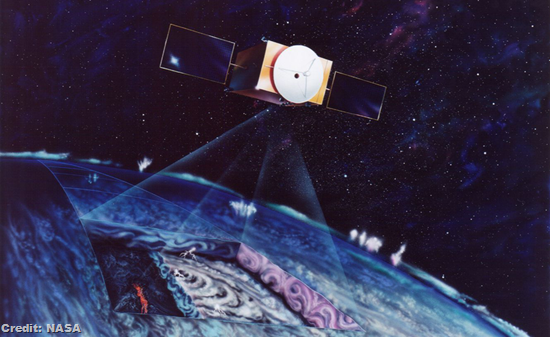
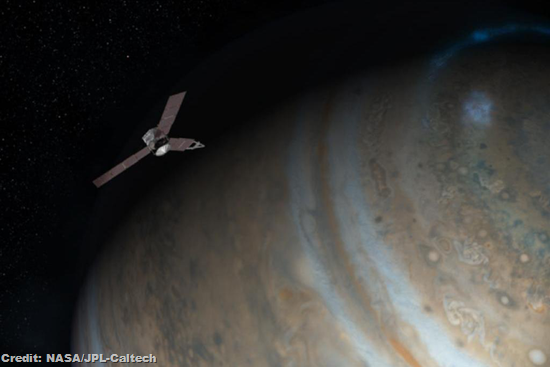
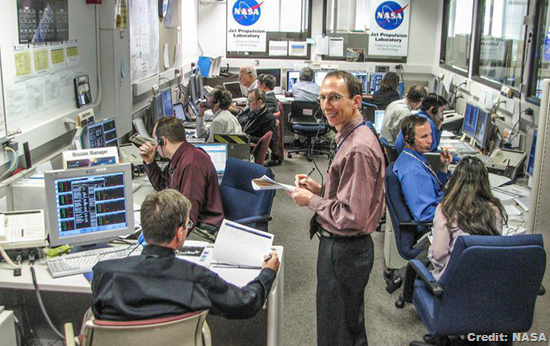
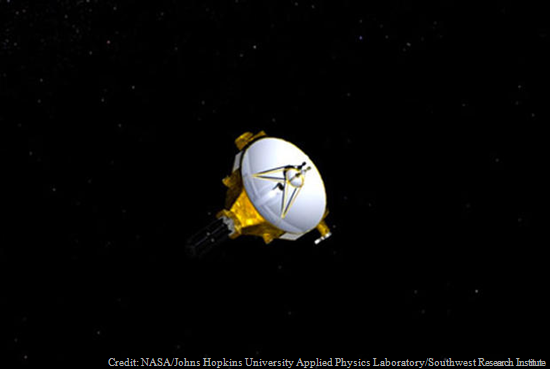
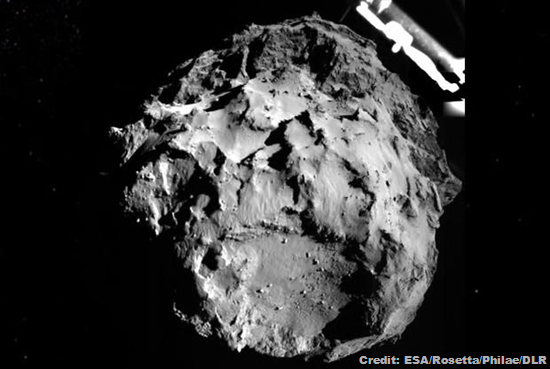
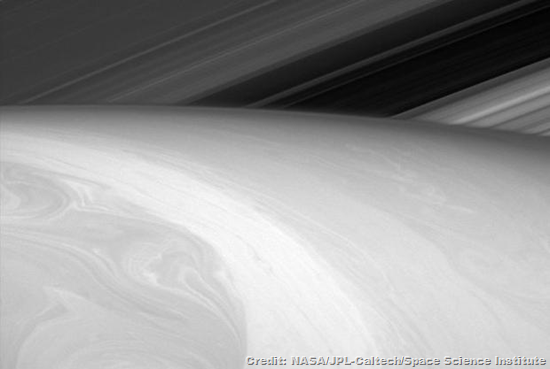

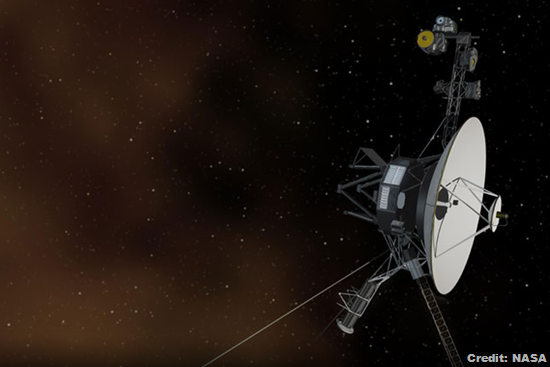
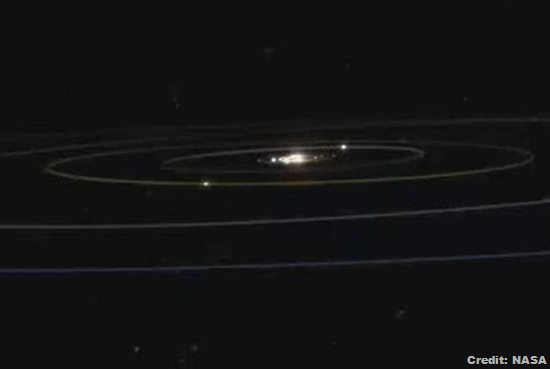
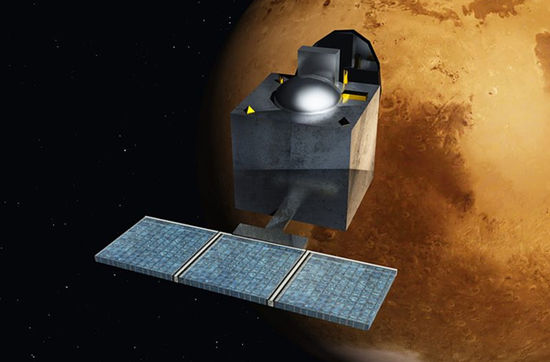

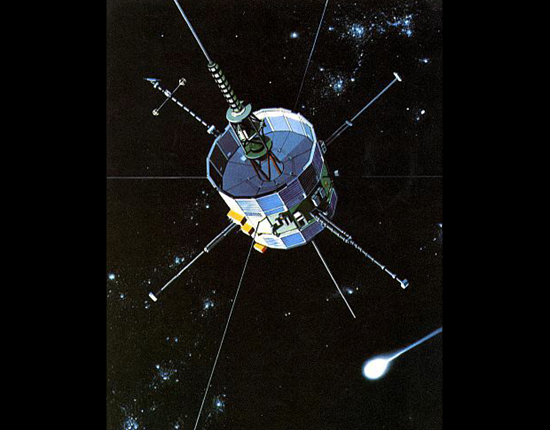
No comments:
Post a Comment
Please adhere to proper blog etiquette when posting your comments. This blog owner will exercise his absolution discretion in allowing or rejecting any comments that are deemed seditious, defamatory, libelous, racist, vulgar, insulting, and other remarks that exhibit similar characteristics. If you insist on using anonymous comments, please write your name or other IDs at the end of your message.